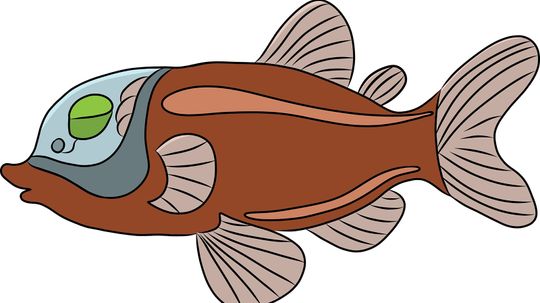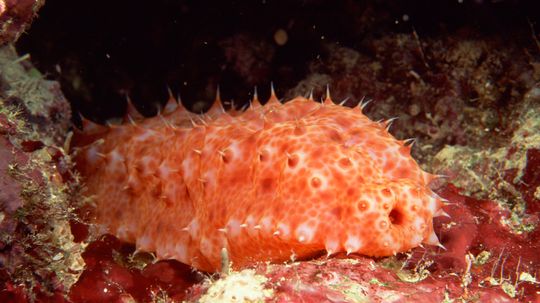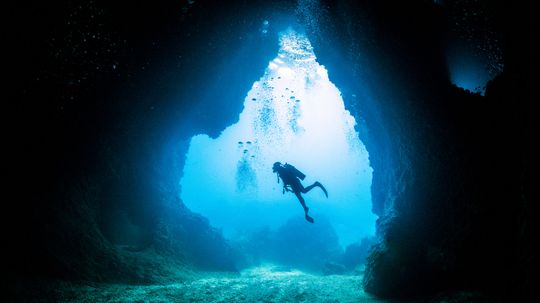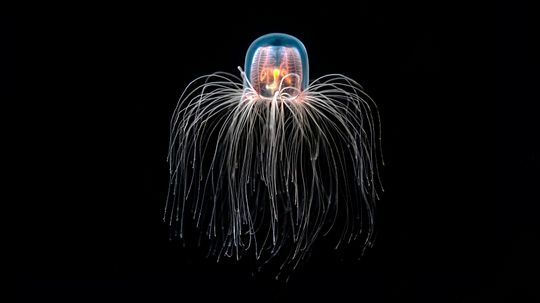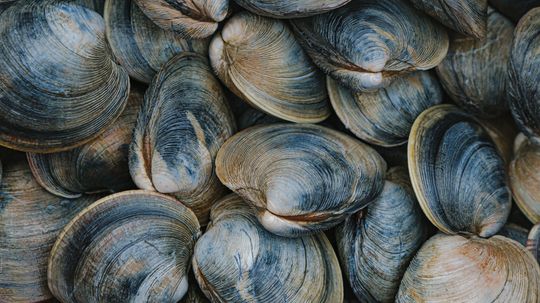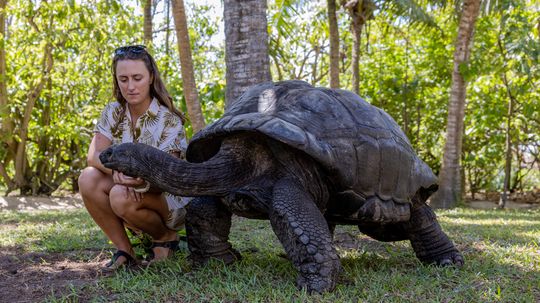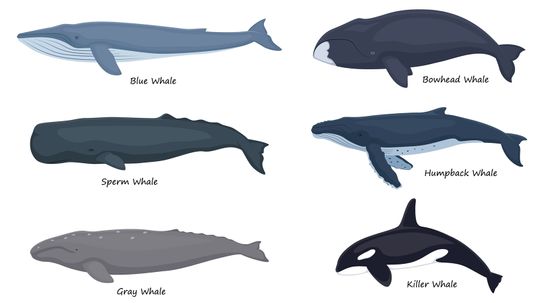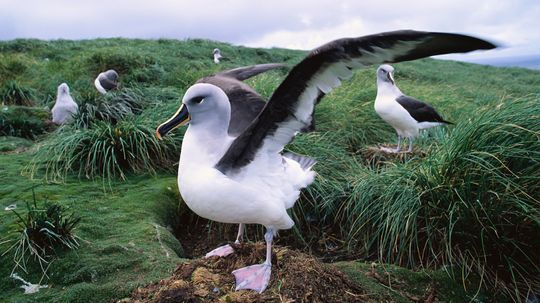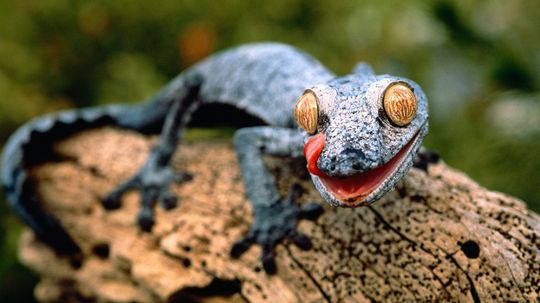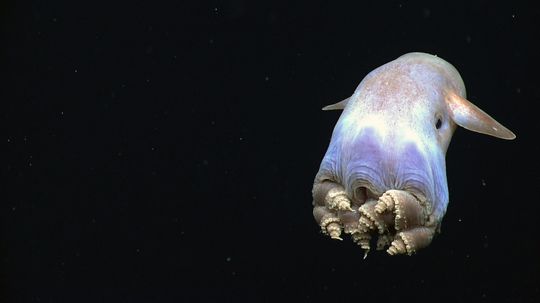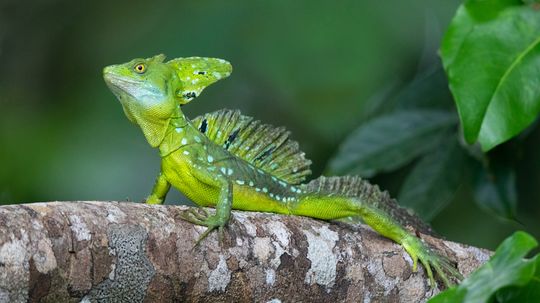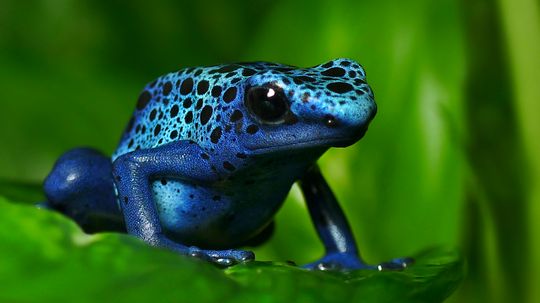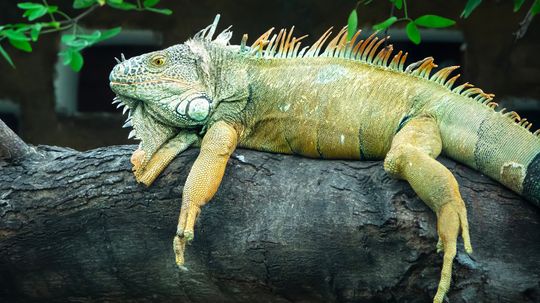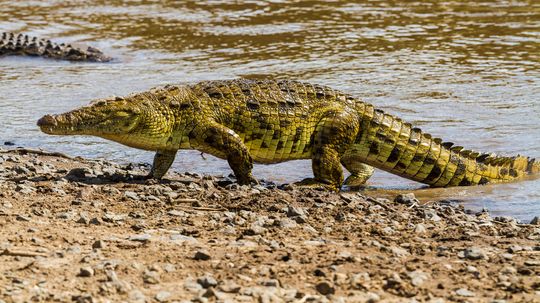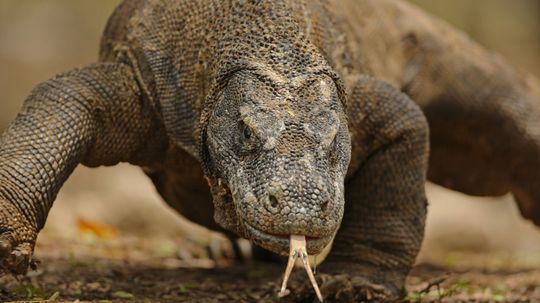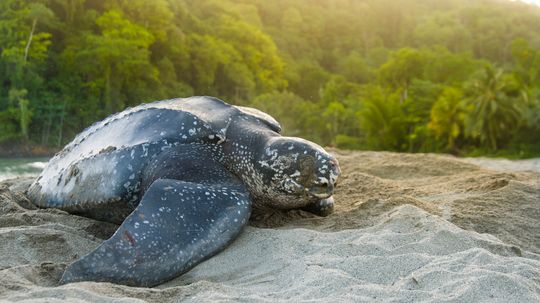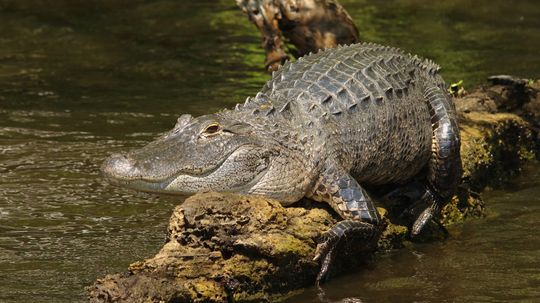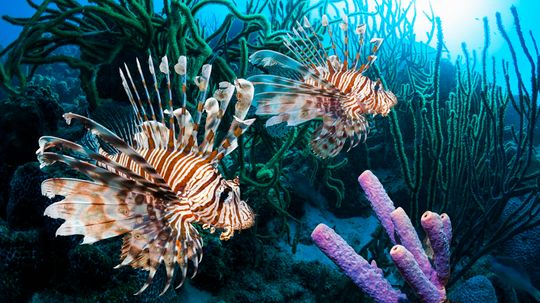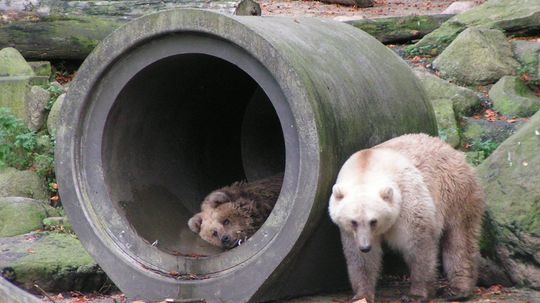Wild Animals
Whether they crawl, fly, swim, slither, walk, run or pounce, wild animals rely on their instincts. Read about all kinds of wild animals, mammals, birds, fish, insects, reptiles and amphibians.
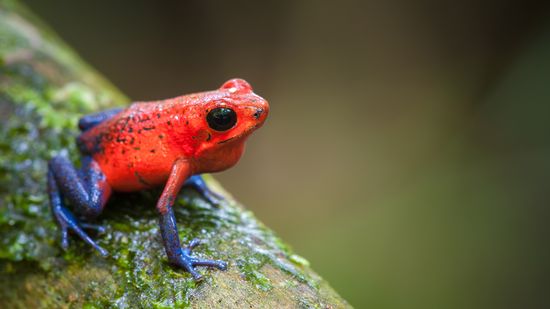
12 Colorful Frog Species: From Tie-dyed Designs to Rare Hues
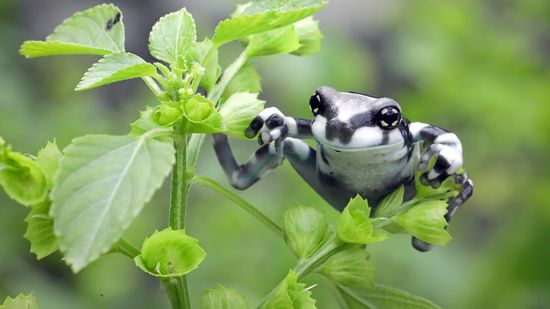
Amazon Milk Frog: Named for Its Defense, Not Its Color
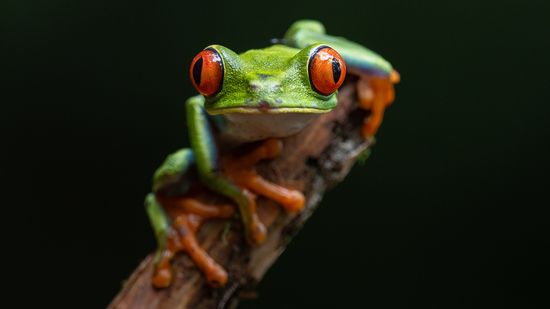
The Red-eyed Tree Frog Has Extremely Sensitive Skin
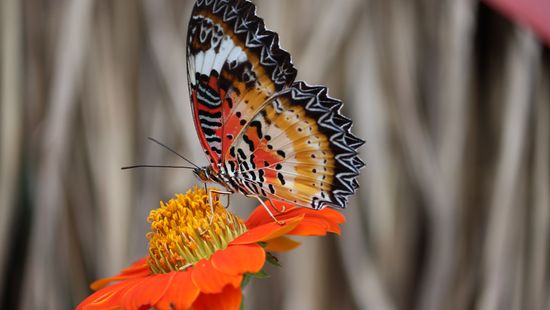
10 Red Butterfly Species Found From India to Florida to Europe
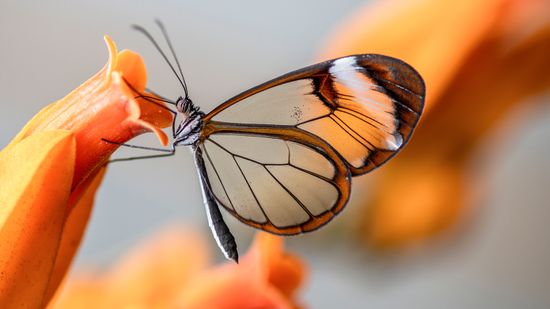
How the Glasswing Butterfly Flutters (Almost) Invisibly
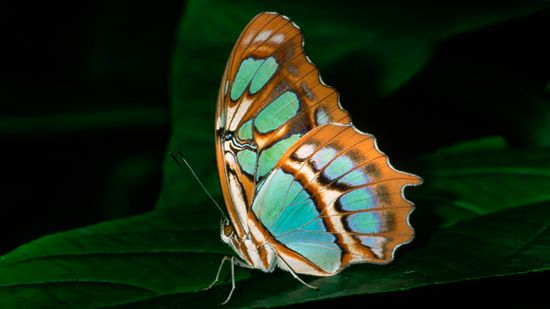
6 Green Butterfly Species Blending in With Their Environments
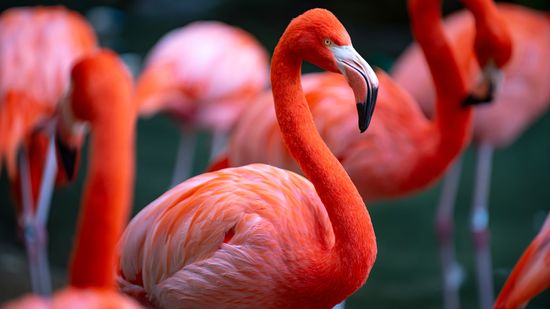
What Is a Group of Flamingos Called? Not a Flock, Another 'F' Word
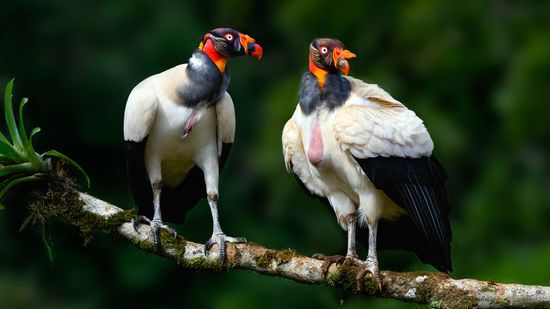
7 Ugliest Bird Species: Evolutionary Qualities That Aren't So Pretty
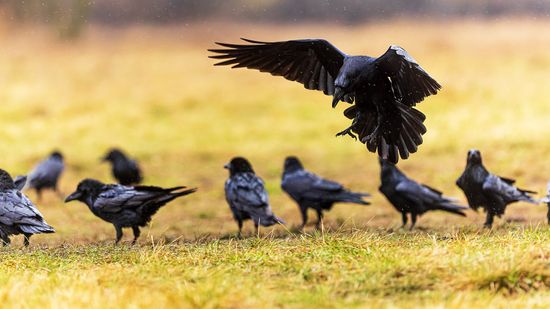
What's a Group of Ravens Called? Not a Murder (That's Crows)
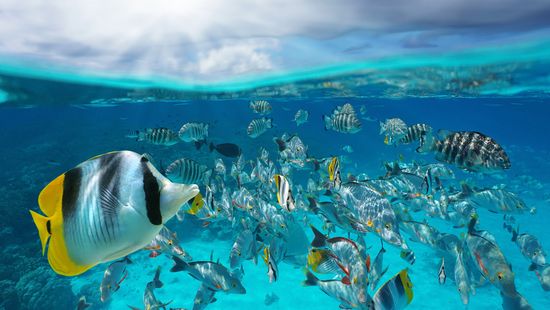
What Is a Group of Fish Called? Not Always a School
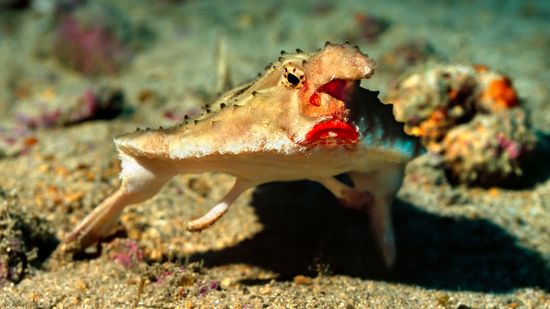
10 Weirdest Fish in the World: Batfish, Hairy Frogfish, and More
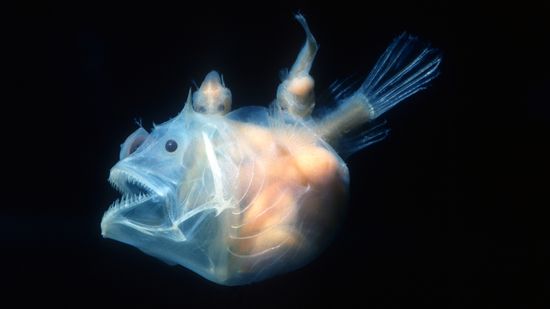
10 Scariest Fish Lurking in Rivers, Deep Ocean Waters, and Shells
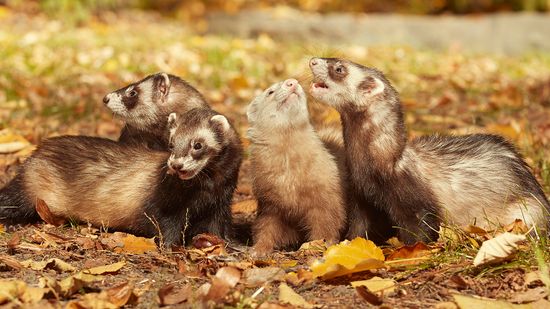
What Is a Group of Ferrets Called? You're Such a Busybody
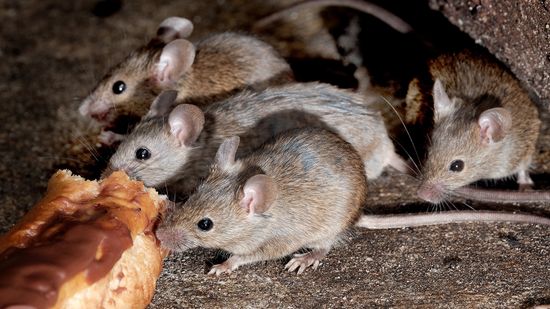
What Is a Group of Mice Called? Not Always a Colony
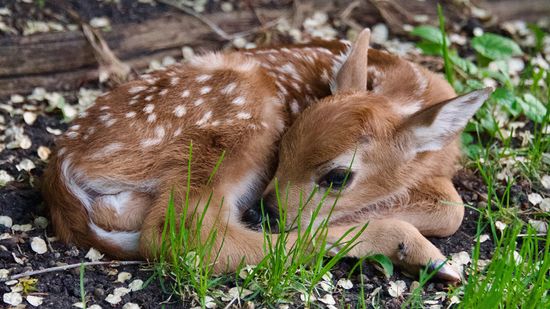
What Is a Baby Deer Called? (Aside From Adorable)
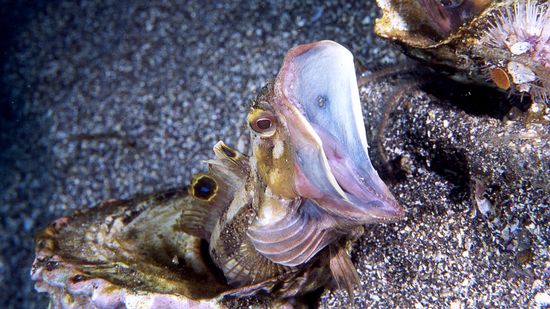
10 of the Scariest Sea Creatures Lurking in the Ocean's Depths
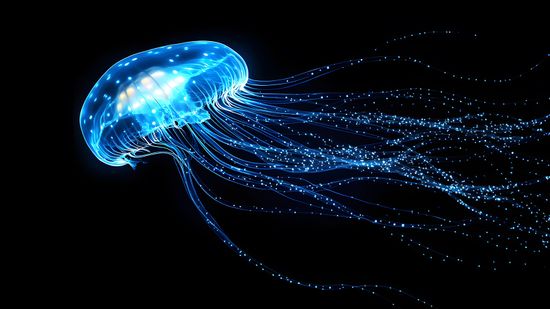
How Bioluminescent Jellyfish Get Their Signature Glow
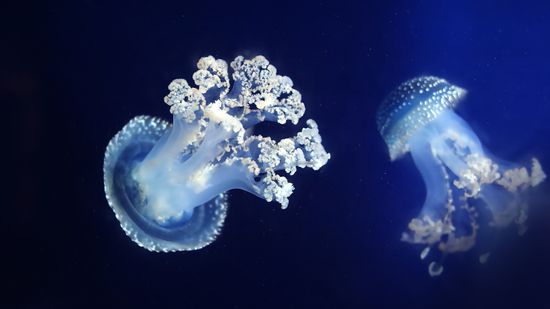
White Spotted Jellyfish: Cute Until They Become Invasive

10 Cutest Snake Species That Have Us Squeeing
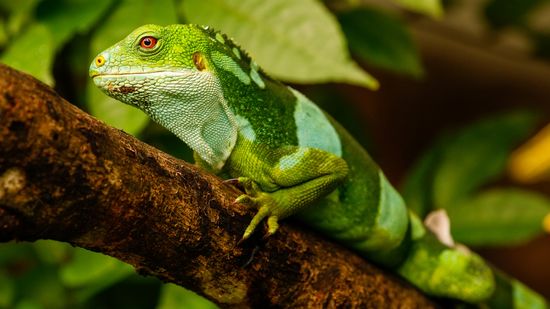
10 Colorful Lizards to Delight Reptile Lovers
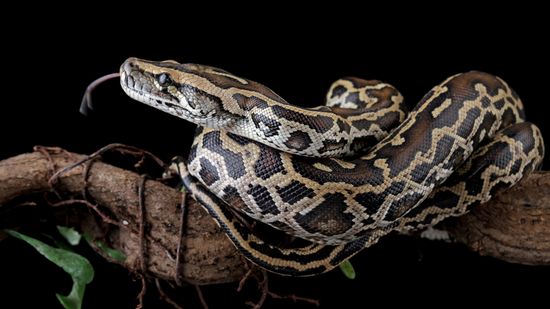
Python vs. Anaconda: Comparing Snakes and Software Languages
Learn More / Page 11
The barreleye fish (Macropinna microstoma) is known for its strange eyes and transparent dome for a head head — features that make it look more like a creature from science fiction than reality.
By Mack Hayden
The soft, cylindrical sea cucumber looks like a vegetable — and in some countries, it's a delicacy because of its nutritional value and health benefits. But it actually belongs to the phylum of echinoderms, closely related to starfish (aka sea stars), sand dollars, sea urchins and sea lilies.
By Ada Tseng
The deep-sea dragonfish is one of the most mysterious and fearsome creatures lurking in the ocean's depths. Known as a top predator in the deep sea, this fish has evolved incredible adaptations to survive in underwater areas that have never known so much as a glimpse of sunlight.
By Mack Hayden
Advertisement
The immortal jellyfish, known as Turritopsis dohrnii, has the ability to reverse age and theoretically live an eternal life. Because of its ability to regrow its cells, it could theoretically escape death over and over again.
By Ada Tseng
The ocean quahog (Arctica islandica) is a clam that redefines what it means to have a long lifespan. This species is famous for being one of the longest-lived animals on Earth, with individuals surviving up to 500 years! That's older than Shakespeare's first play.
By Zach Taras
The marine iguana is found only in the Galápagos Islands. From their sleek swimming skills underwater to their clumsy movements on land, they're perfectly adapted to their marine environment.
By Zach Taras
The naked mole rat (Heterocephalus glaber) is found in the dry regions of East Africa. These hairless, wrinkly rodents live in underground colonies that function more like insect hives than typical mammal groups.
By Mack Hayden
Advertisement
By the time the oldest human dies, odds are there's a giant tortoise out there somewhere who'll live twice as long as they did. Hailing from the Indian Ocean and the Galapagos islands, giant tortoises have been one of the most durable and long-living species for centuries upon centuries.
By Mack Hayden
The bowhead whale (Balaena mysticetus) is found in the icy waters of the Arctic. These are the longest-living mammals; some bowhead whales live for over 200 years. That's older than many countries' independence!
Let's get the obvious out of the way: The geoduck (Panopea generosa) looks more than a little NSFW. But it's totally PG, we swear! Found primarily in the Pacific Northwest, this massive mollusk has captured the attention of scientists, seafood lovers and curious minds alike.
By Mack Hayden
The albatross is one of nature's most impressive flyers, soaring effortlessly over the ocean for days or weeks at a time, often without flapping its wings for hours. These majestic seabirds are built for gliding across vast distances as they search for food and connect distant parts of the world.
By Karina Ryan
Advertisement
Lizards are some of the most diverse and fascinating creatures on the planet. There are so many types of reptiles that come in an incredible variety of shapes, sizes and colors, from worm-sized snakes and tiny turtles to gargantuan crocodiles and giant monitor lizards that could pass for modern-day dinosaurs.
By Mack Hayden
Winter animals have to be resilient to endure cold temperatures and adapt to food scarcity in order to survive in extreme environments.
By Mack Hayden
Deep in the ocean, living in eternal darkness, is the dumbo octopus (of the genus Grimpoteuthis), a creature that few humans have seen face-to-face. When someone is lucky enough to spot one, they're often captivated by its charms.
If you've ever seen a lizard running across the surface of water, you've likely witnessed the amazing basilisk lizard in action. This stunning feat earned the basilisk the nickname "Jesus Christ lizard." Like the founder of Christianity, this slithery critter can walk across lakes and seas.
By Mack Hayden
Advertisement
The Galapagos tortoise is one of the most iconic reptiles on Earth, and for good reason. These gentle giants are the largest tortoises in the world, living on the Galápagos Islands and playing a key role in their ecosystems.
By Karina Ryan
Let's dig into the key traits, differences and surprising similarities of these cold-blooded creatures.
By Mack Hayden
Did you know green iguanas have a third eye and can grow up to 7 feet (2.1 meters) long?
By Ada Tseng
The green sea turtle is among the most elegant marine creatures cruising through our oceans. Known for their gentle demeanor and striking appearance, these marine turtles are vital to ocean ecosystems, especially their marine turtle habitat in coral reefs and seagrass meadows.
Advertisement
Found across Africa, these aquatic giants are known for their incredible hunting abilities, remarkable parenting instincts. To be honest, their ability to make us glad we're not in their neighborhood!
By Zach Taras
Found only in Indonesia, the Komodo dragon (Varanus komodoensis) roams the rugged terrain of islands like Komodo Island and within Komodo National Park, a protected sanctuary for these unique reptiles.
By Mack Hayden
The leatherback sea turtle is the heavyweight of the sea turtle world ... literally. This sea turtle species can grow as long as a small car and weighing over half a ton!
By Mack Hayden
The American alligator is the second-largest reptile in North America, falling just slightly behind its cousin, the American crocodile.
By Mitch Ryan
Advertisement
The most dangerous sea creatures in the world don't always have large teeth like great white sharks or weigh over 10 tons (9 metric tonnes) like the killer whale. The sea creatures that are a threat to humans are often the smaller, more innocent-looking ones that carry lethal amounts of venom.
By Ada Tseng
The grolar bear, also known as the pizzly bear, is a hybrid animal that's the result of crossbreeding between a polar bear and a grizzly bear, two species typically separated by geography and habitat.
